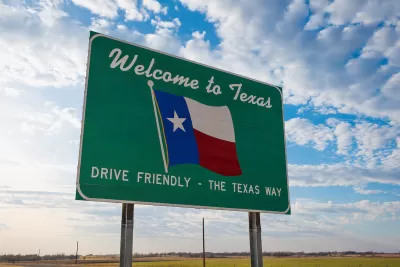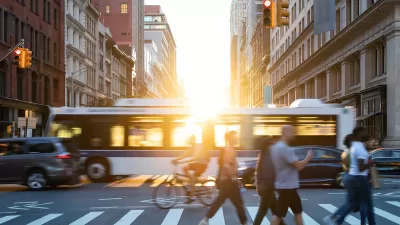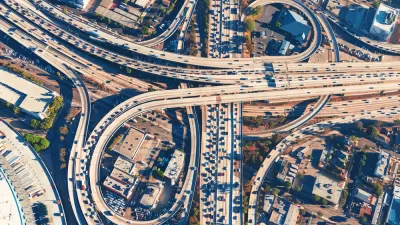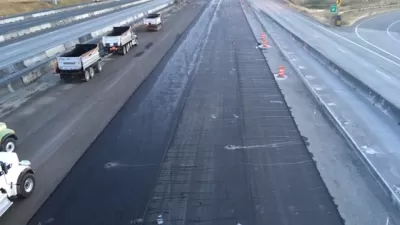Transit advocates say the state’s carbon reduction strategy reveals a continued preference for car-oriented infrastructure.

Texas transportation advocates say the state Department of Transportation’s ‘Carbon Reduction Strategy’ does “the bare minimum” to reduce emissions in the transportation sector, writes Erin Douglas in the Texas Tribune, noting that the document is a requirement to receive federal transportation funds.
“According to the TxDOT draft document, a chunk of the Infrastructure Investment and Jobs Act money will be transferred to a highway program, and the agency says highway expansions could be eligible for the funds because they will reduce congestion, thereby reducing emissions from idling cars.” As Douglas explains, the plan projects an increase in vehicle miles driven as the state’s population grows and promotes highway projects as a way to reduce congestion, although “Both public transportation and environmental advocates are critical of the agency’s argument that improving traffic flow will reduce carbon emissions from vehicles.”
Douglas adds, “The draft strategy doesn’t use the words ‘climate change’ and nor does it state the importance of reducing emissions to avoid worsening effects of climate change.” Meanwhile, TxDOT largely places the burden of building public transit on local agencies, though “The draft strategy also includes improvements in bicycling and walking infrastructure and projects that support the use of public transportation, such as pedestrian bridges.”
FULL STORY: Texas could spend federal funds meant to cut carbon emissions on highway projects

Study: Maui’s Plan to Convert Vacation Rentals to Long-Term Housing Could Cause Nearly $1 Billion Economic Loss
The plan would reduce visitor accommodation by 25,% resulting in 1,900 jobs lost.

North Texas Transit Leaders Tout Benefits of TOD for Growing Region
At a summit focused on transit-oriented development, policymakers discussed how North Texas’ expanded light rail system can serve as a tool for economic growth.

Why Should We Subsidize Public Transportation?
Many public transit agencies face financial stress due to rising costs, declining fare revenue, and declining subsidies. Transit advocates must provide a strong business case for increasing public transit funding.

How Community Science Connects People, Parks, and Biodiversity
Community science engages people of all backgrounds in documenting local biodiversity, strengthening connections to nature, and contributing to global efforts like the City Nature Challenge to build a more inclusive and resilient future.

Alabama: Trump Terminates Settlements for Black Communities Harmed By Raw Sewage
Trump deemed the landmark civil rights agreement “illegal DEI and environmental justice policy.”

Dear Tesla Driver: “It’s not You, It’s Him.”
Amidst a booming bumper sticker industry, one writer offers solace to those asking, “Does this car make me look fascist?”
Urban Design for Planners 1: Software Tools
This six-course series explores essential urban design concepts using open source software and equips planners with the tools they need to participate fully in the urban design process.
Planning for Universal Design
Learn the tools for implementing Universal Design in planning regulations.
City of Santa Clarita
Ascent Environmental
Institute for Housing and Urban Development Studies (IHS)
City of Grandview
Harvard GSD Executive Education
Toledo-Lucas County Plan Commissions
Salt Lake City
NYU Wagner Graduate School of Public Service





























